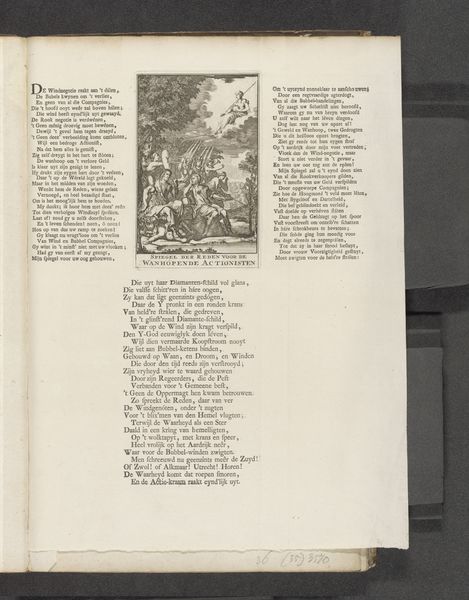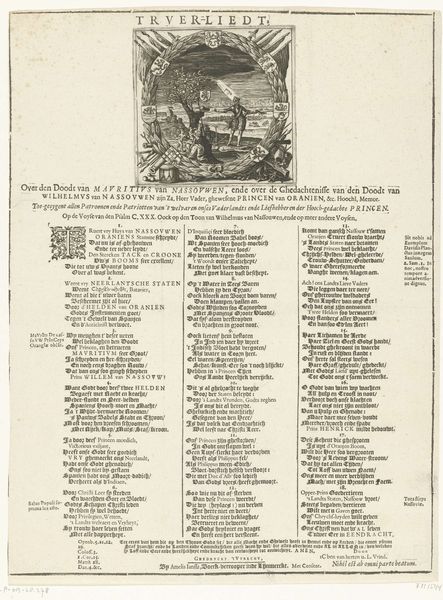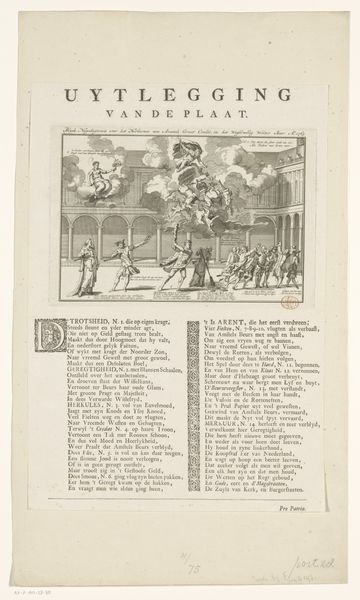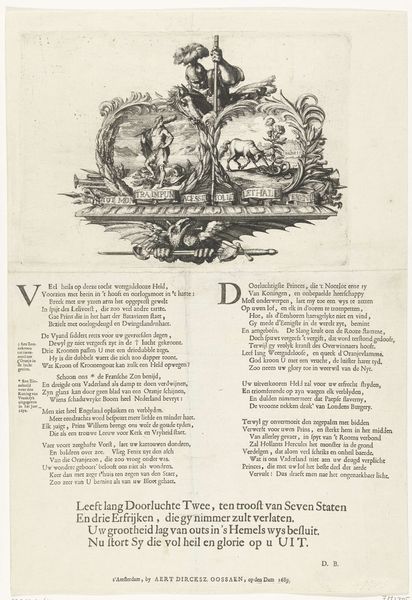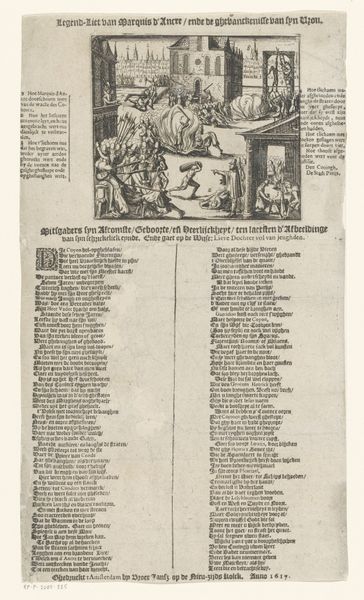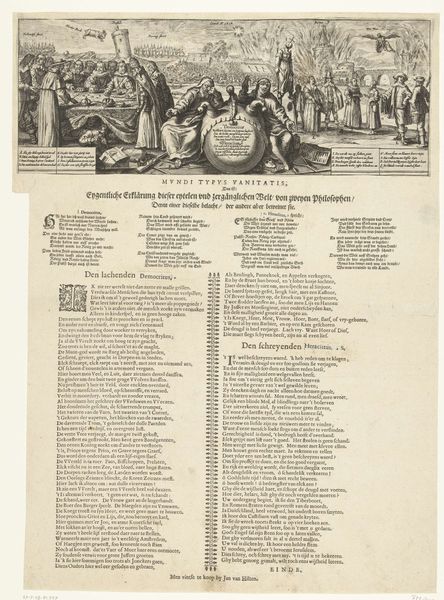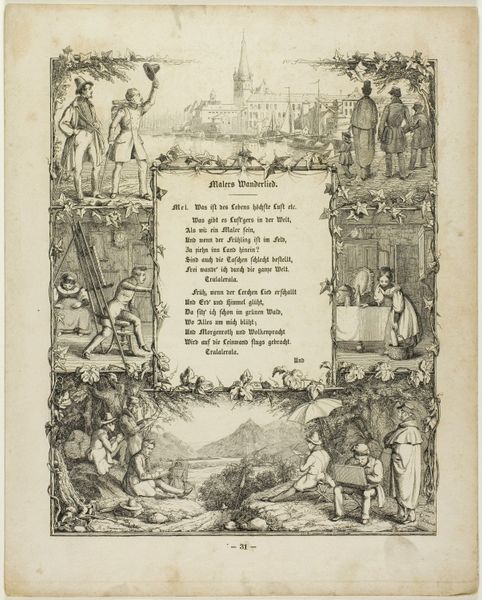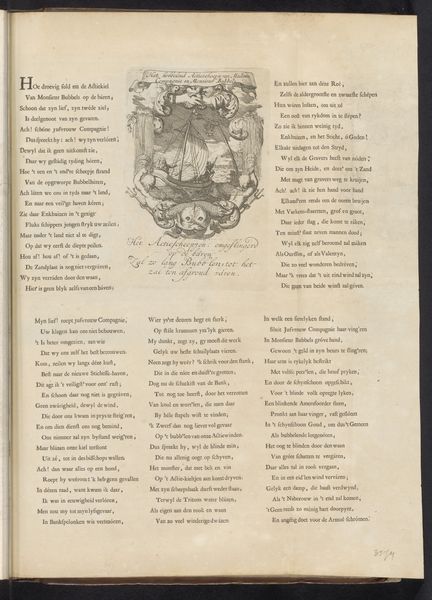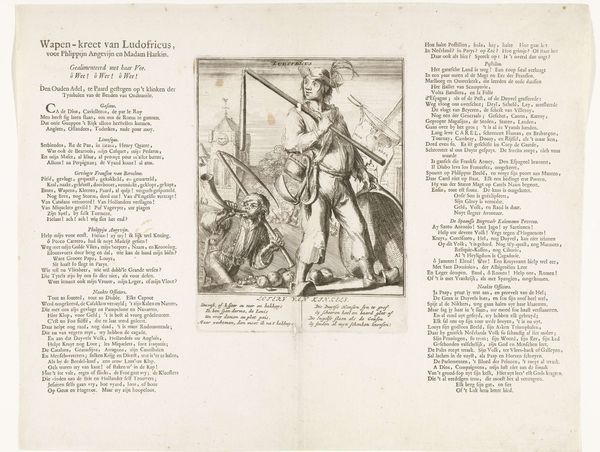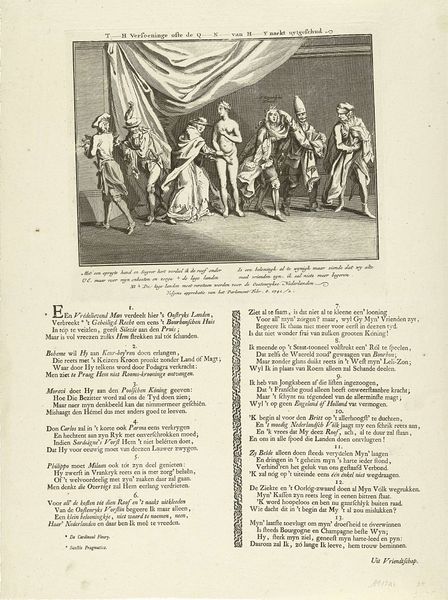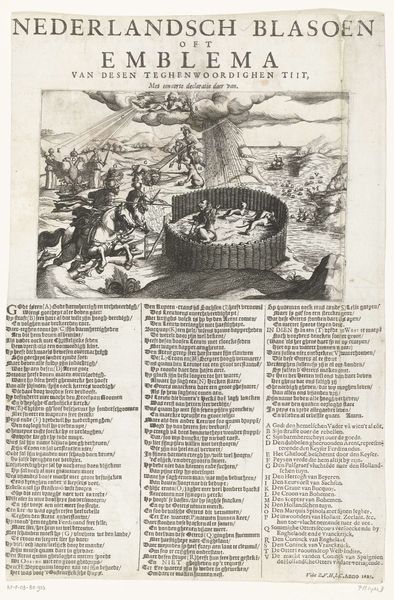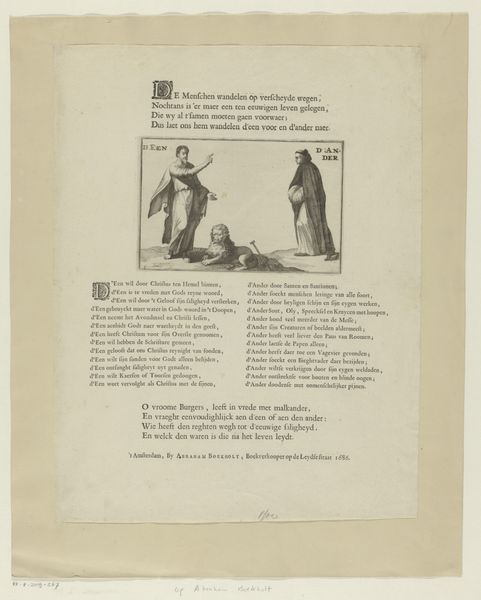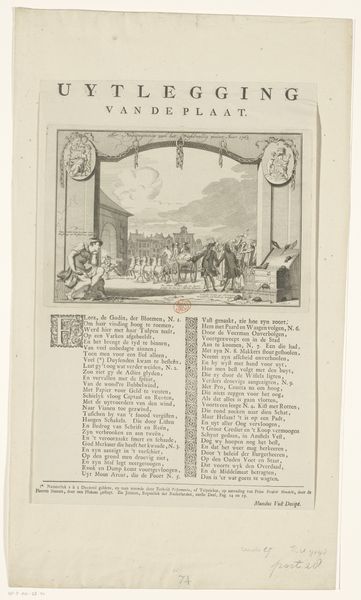
graphic-art, print, etching, engraving
#
graphic-art
#
allegory
#
ink paper printed
# print
#
etching
#
history-painting
#
engraving
Dimensions: height 157 mm, width 101 mm, height 420 mm, width 328 mm
Copyright: Rijks Museum: Open Domain
Editor: This print, titled "Spiegel der Reden voor de wanhopende Actionist" from 1720 by Jacobus Schijnvoet, caught my eye at the Rijksmuseum. It’s incredibly detailed, like a political cartoon, and seems to have a rather gloomy mood. What do you see in this piece? Curator: Well, this print throws us right into the Dutch Republic’s turbulent economic history! The title itself, "Mirror of Reasoning for the Despairing Actionist," hints at the chaos of the speculative bubble of the time. We have to consider this artwork as a form of visual activism. How do you read the allegory in relation to that context? Editor: It definitely feels critical. Are you saying that the figures huddled below are the "actionists," those caught in the speculative frenzy? Curator: Precisely. Schijnvoet uses allegory to comment on their folly, their despair in the face of economic collapse. Note the figure of Reason descending from the sky—truth casting light, challenging their “Bubbelwinden”. This pursuit of wealth isn't disconnected from moral failures or political anxieties; how do you interpret its implications on social responsibility? Editor: It seems like a powerful statement about the dangers of unchecked greed and speculation, and maybe the artist feels responsible for pointing it out? It's like he’s connecting economic behavior to larger ethical frameworks. I guess this is where we get some sense of how "contemporary theory" can give historical context? Curator: Exactly! Seeing art within its socio-political web—asking who benefits, who suffers, and what power structures are at play - allows us to reveal not just artistic choices, but their echoes across time. This print becomes more than a pretty picture; it’s a piece of historical and social critique. Editor: That makes so much sense. I didn’t initially appreciate how relevant these 18th-century economic anxieties still are. Thanks, that really gave me a lot to think about!
Comments
No comments
Be the first to comment and join the conversation on the ultimate creative platform.
